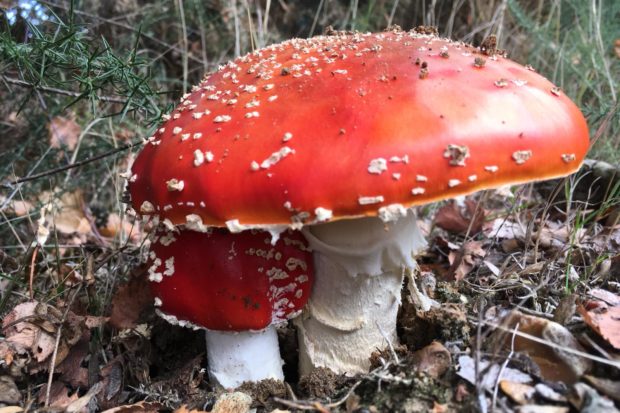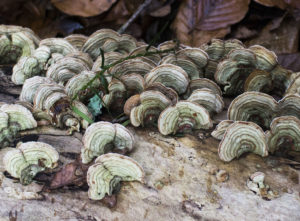Devil’s Fingers, False Death Cap, Turkey Tail…what on Earth?

Earthballs! We are, of course, talking about fungi. Halloween may have come and gone, but the spooky names of fungi live on. You may find just some of these species in the woods, but whatever you see above ground – the reproductive part in the form of toadstools or mushrooms, is only part of the fungi story. Why?

Turkey Tail fungus by Jonathan Shavelar
Benefiting trees and plants Fungi hyphae – tiny colourless threads – form an underground spider-like web providing life support to trees and plants by supplying them with nutrients. In return the hyphae extract food (sugars) from the trees. This mutually beneficial, or symbiotic relationship with each other is known as a mycorrhiza.
Helping to recycle Without the help of fungi we might be wading in dead plants and animals. Fungi offer an excellent recycling service, breaking down dead matter such as leaf litter which provides food source to other organisms.
Bog Beacon fungus by Martin D’Arcy
Providing a habitat and food source Fungi provide shelter and food to many mammals and invertebrates; in fact it’s thought that up to 1000 insect species rely on fungi as part of the food chain.
Bog Beacon, Dark Purple Earthtongue and Bearded Booth…just a few more of the wonderfully named fungi, so vital to healthy eco-systems – a good reason to leave them where you find them 🙂
Warden Trudi
